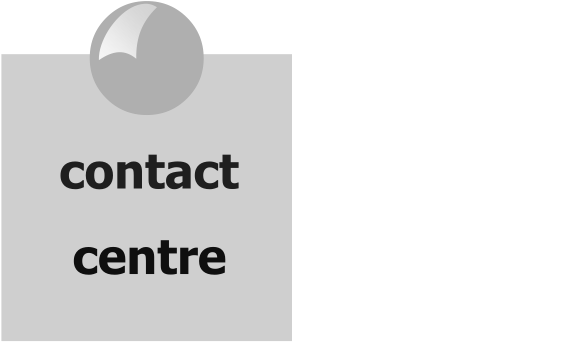Board member time bomb for those not focused at Technology
Preventing Board level time bombs
Many boards are focusing on this modern topic of accepting the CIO to the table but many still need to get there. Boards need to source experience to help them get where they need to get. Firstly accepting the fact then supporting the transition of the CIO from a technical to a more business focused individual. Consider smaller boutique interim consulting companies who bring actual ‘done-it-before’ experience, compared to teams of graduate students learning on the job.
We should actually be concerned about things boards are ‘NOT’ discussing
There have been many articles written about placing IT technology agendas on the boardroom table and also many recent blogs about the potential demise of the CIO role as the CMO or CDO leap forward into the limelight of corporate awareness. This is not surprising as in many corporations today the CIO or technology officers still do not have a voice let alone a seat at the boardroom table.
CEOs and their executive leadership teams should recognise that if they don’t have the technology knowledge at their fingertips then they are making corporate decisions in the dark. Boards should be building technology agendas into the core of their medium term business strategy, if they don’t want to be overtaken by their competition. The digital agenda does drive business growth and in turn revenue and market share – so this is why CEOs should be consciously recognising technology does have a say in the way that the business grows.
“One area of change I see in the corporate executive shuffle of today’s businesses is the aspiration to own the digital space”, comments Craig Ashmole, Founding Partner of London based IT consulting CCServe. “Marketing executives understand the digital needs and CIOs feel threatened that they do, but it is Technology that’s required to make it all happen”.
Technology executives need to move with the times supporting marketing initiatives, being creative while efficiently using technology and becoming enablers rather than gatekeepers, then gaps wont develop within the executive ranks nor will ‘shadow IT’ proliferate over the corporation.
Board members should take their quota of responsibility to open up wider discussions around how the company grows its business efficiently using technology otherwise they are likely to fall behind. As a counter argument the CIO or technology leaders need to do their bit, which requires them to better understand how to be a commercial business leader not just a ‘tech-na-geek’ hiding behind technology – the CIO role needs to be a commercial business leader who understands where innovative technology will make a difference.
When a company grows through acquisition or chooses to carve-out non core elements of its business, this is another compelling reason to have ones IT technology ‘in-shape’ enabling the ease of separation or reducing merger ‘join-up’ time, which obviously reduces cost of acquisition.
So some areas of food for thought!
How well is the present IT Technology strategy delivering?
By putting the CIO or the technology agenda on the agenda of the boardroom table will enable all executives to better understand their position in the marketplace. The CIO needs to be able to articulate this in business language not technical language.
Can you clearly establish business efficiency from ones technology?
The CIO should be making rapid change or transformation within his department, moving day to day functional utilities services, like IT desktop support, software application management, Network / Telecoms services into more efficient engagement models some of which may well be outsourced service partners. The focus for internal resources can then be more effectively focussed at innovative solutions or applications that will drive corporate business and revenue growth. In other words move away from the old school technology ‘Ivory Towers’ and massive IT departments to mean lean agile innovative technology enablement.
If you are an ecommerce organisation; have you addressed a payments, mobility strategy?
One of the biggest areas of growth/change presently is in the mobile payments and Near Field Communications (NFC) areas. With Apple and the mobile market place looking to drive payments with your smart phone and the Credit Card banking players trying to open up automatic payments by NFC and chip-and-pin touch payments there’s a lot going on.
With the likes of electronic payments company’s such as the traditional PayPal and SagePay we are also seeing the big power houses of both Amazon and Google engaging and driving electronic payments strategies. More recently the major European region the acquisition of Skrill by Optimal Payments has created a new power house payments group which will see rapid technology advancement.
Do your customers have the tools or applications needed to do business with you?
The CIO or IT Department has for so long been inwardly focussed and this has to change. The old school approach of saying that the service or application has not been approved or developed by the IT dept. so it is not permitted to be used; has to go. IT should be the enabler when users bring new ideas to the forefront while looking to how they could efficiently bring new services or applications into the business in a controlled and security conscious manner.
Is security a worry for you? If it’s not then you are in trouble already.
This has to be the one area that you should never say never. The likes of the recent hacks like Ashley Maddison, Sony Pictures Entertainment and Apple iCloud should be a constant reminder that one should never be complaisant when it comes to data security and in keeping your customer data or PII Personal Identifiable Information (email, tel numbers, credit card and passwords) secure. This is a wide subject but should in all respects have a dedicated leader within the business driving this department ensuring that you keep your business safe from the world of hackers and fraudsters.
“So the time bomb that needs to be subdued is the ever widening gap between corporate board members and the understanding of the value technology brings to a corporation.” Craig goes on to say, “Corporate decisions; like where to expand the business geographically or whether to go through with an acquisition should not be made in the ‘dark’, and it is technology that could potentially make the difference to success or failure with those corporate board decisions.”




Recent Comments